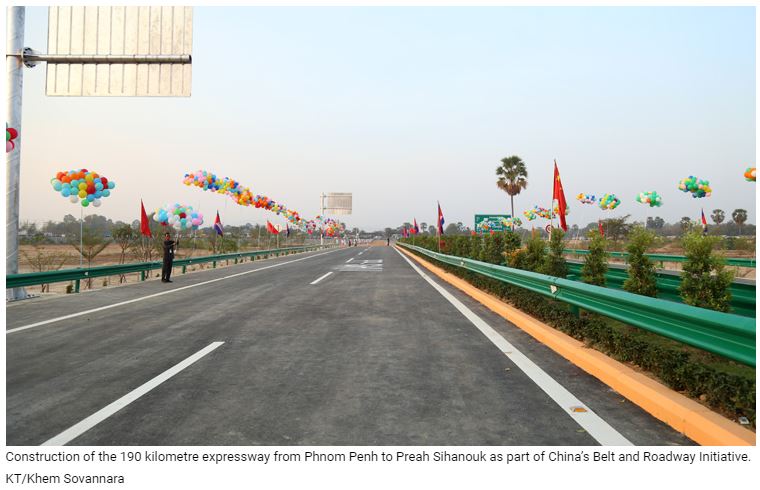Cambodia: More developments under Belt and Road Initiative
Four multi-purpose buildings will be constructed in Phnom Penh, Koh Kong and Kep to support China’s Belt and Road Initiative (BRI).
The BRI is an ambitious programme to connect Asia with Africa and Europe via land and maritime networks along six corridors with the aim of improving regional integration, increasing trade and stimulating economic growth.
The name was chosen in 2013 by China’s President Xi Jinping, who drew inspiration from the concept of the Silk Road established during the Han Dynasty 2,000 years ago – an ancient network of trade routes that connected China to the Mediterranean via Eurasia for centuries.
The BRI comprises a Silk Road Economic Belt – a trans-continental passage that links China with Southeast Asia, South Asia, Central Asia, Russia and Europe by land – and a 21st century Maritime Silk Road, a sea route connecting China’s coastal regions with Southeast and South Asia, the South Pacific, the Middle East and Eastern Africa, all the way to Europe
The first of the four new projects claiming to be part of this initiative is the Chong Fang International Building, the tallest of the four projects. Located in Khan Tuol Kork district, the building is to be 180 metres high, 60 floors and scheduled to be completed in December 2020.
To date, the structure of this building has been completed. The topping-out ceremony was held on Aug 28 and presided over by Industry, Science,Technology and Innovation Minister Cham Prasidh.
This multi-purpose building will host commercial banks, training centres for small and medium enterprises, technology management systems, business tourism centres and financial hubs for Southeast Asia.
There will also be a restaurant on the top floor of the building in response to high local demand.
Meanwhile, three other projects are planned to be developed after the completion of this project. Those include one located near Phnom Penh International Airport, one in Koh Kong province and another in Kep Thmey beach, Kampot province.
With all that being said, it leads to the question of how do these projects claim to
be supported by the BRI?
As a result of the close diplomatic relationship between Cambodia and China, and the volume of Chinese investment and technical assistance to Cambodia, there is a large Chinese investment in Cambodia, but it is not necessarily a part of the BRI.
BRI investment will be beneficial for the Kingdom because it mainly focuses on the infrastructure and connectivity for trade and cultural cooperation, says Neak Chandarith, director of the Cambodia 21st Century Maritime Silk Road Research Centre in Phnom Penh and also a BRI expert.
China’s BRI is aimed at helping Chinese investors to operate businesses in other countries. Cambodia has a good opportunity to develop its economy through that investment.
Chandarith agrees that it is difficult to make a judgment on which projects are related to the BRI and which projects are not. “Until today, we saw that the BRI investment projects in Cambodia are the Lower Se
San 2 Dam, Sihanoukville Special Economic Zone, the Expressway from Phnom Penh to Sihanouk and Siem Reap International Airport,” Chandarith adds.
With many projects going ahead saying they are a part of the BRI, it is pretty clear that some projects are latching on to the claim that they are part of the Belt and Road Initiative and not showing much transparency.
Mey Kalyan, senior adviser to the Supreme National Economic Council, recognises the benefit of the infrastructure through the BRI investment projects, but is keen to make sure that they fulfill the needs of Cambodia.
Kalyan wants those projects to ensure transparency, efficiency, sustainability and inclusiveness. There should also be a bilateral committee to oversee them, he adds. “As far as we know, the BRI is focused on the infrastructure, so it is a benefit to the Kingdom,” says Kalyan.
However, Kalyan says that so far there is no exact definition or the differentiation over which projects are considered as BRI investment and those that are not. “Some Chinese companies, barbershops or restaurants also claim that they are under the BRI,” Kalyan adds.
Source: https://www.khmertimeskh.com/50759516/more-developments-under-belt-and-road-initiative/


 English
English




